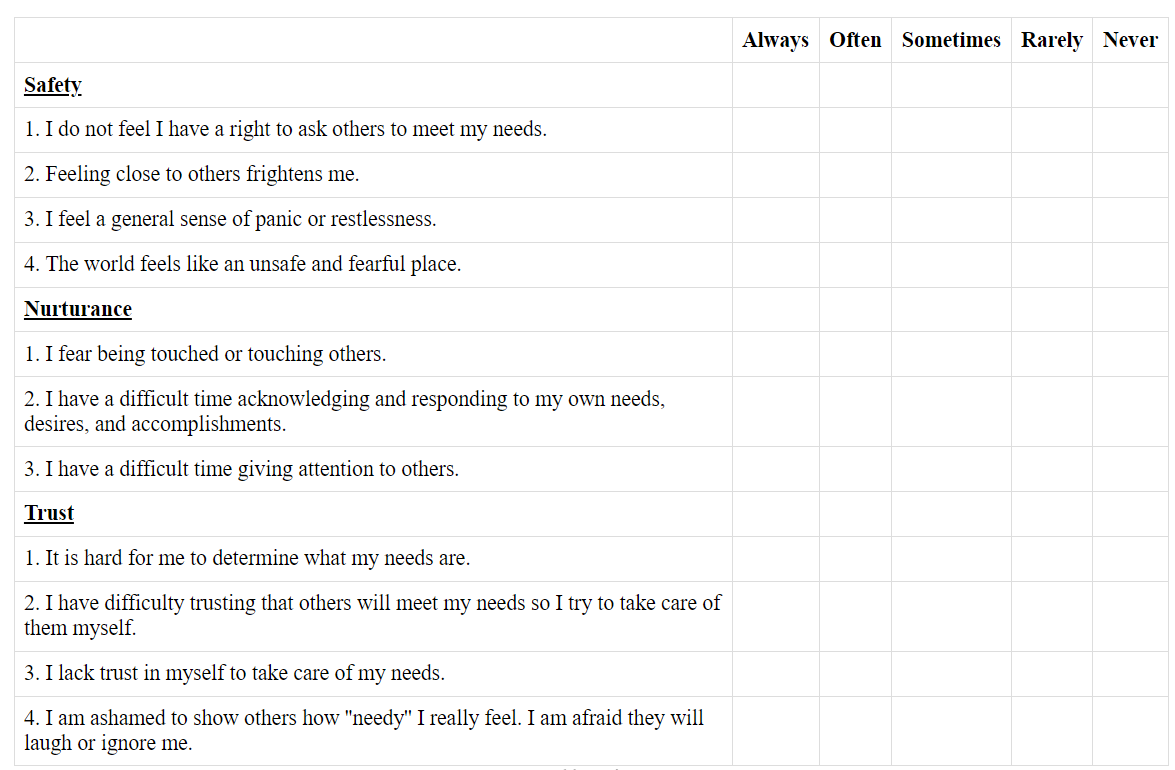What is our Inner Child?
Our 'Inner child' is also known as our deepest or true self and refers to who we are when we feel most authentic, genuine, or spirited. Our 'true self' accepts ourselves and others. It allows us to feel and express those feelings of accepting and not judging.
Our inner child is also the part of us that we experience (both good and bad) during our early years. This includes feelings of happiness and the ability to be spontaneous, which stays with us in adult life. This is very much like our secure base that has developed and makes us feel safe. There are different aspects of our inner child, and some people they might describe these as different in age, for example, baby, toddler, teen and adult.
Try the following exercise out
Allow up to 30-minutes for this exercise. This exercise aims to help you identify whether your needs were met during the infant stage. If you begin to feel overwhelmed at any point, please ensure you take a break.
Find a private place. Have a pen and paper ready, print out the following, or write down headings 'safety' (with 4 questions below), 'nurturance' (with 3 questions below), and 'trust' (with 4 questions below). Play soothing music, light a candle (or dimmer your light), and prepare your space to be as comfortable as you like. It may be useful to write down your responses to each question, for instance, what is coming up for you emotionally and physically.
Read each statement slowly. Take your time, and pick the option that best expresses how often you feel this way.
Next, reflect on your answers. Look under 'Safety' and 'Nurturing'. If you ticked mostly 'never' or 'rarely' here but mostly 'often' or 'always for 'Trust', then your caretaker probably met your basic needs and was physically affectionate but did not respond to your emotional needs. You may have felt cared for and safe but not responded to enough to feel and develop trust.
If your answers show that you feel safe and trusting but are uncomfortable with nurturing, your caretaker may not have been very affectionate. Responding with either ''always'' or ''never'' could indicate a lack of flexibility or a need to always be in control. Use your own judgment to interpret the significance for you. For instance, in statement five, under nurturance, if you responded by saying that you always fear being touched by others, this is an indication that you need to do some work with your fear.
On the other hand, if you never fear touching or being touched by others, there could be a problem as well. You may have difficulty with boundaries and need to be involved in touching or being touched all the time. This activity may indicate an excessive need to experience safety through touch (Taylor, 1991).
How therapy can help
When a person has experienced trauma, neglect, or abuse, parts of their inner child can feel hurt and need emotional healing to rebuild self-regulation and trust to feel safe within relationships. If your inner child is struggling, this will impact your daily life and relationships. This is when therapy can help by providing you with a safe space to explore thoughts, feelings and behaviours in a non-judgmental, warm, and safe place; to self-regulate yourself to be with your inner child.
There are many ways of working with your inner child, and all therapists work differently. One of the ways we work is through connecting with a person's inner child by using Russian dolls; having a physical object to see can help a person connect with their inner child.
If you would like to learn more, contact Relational Counselling.
- By Melissa and Elizabeth
If you need to talk to a counsellor contact Relational Counselling
References
Taylor, C. (1991) The Inner Child Workbook: What to do with your past when it just won't go away. New York: Tarcher Perigee.






